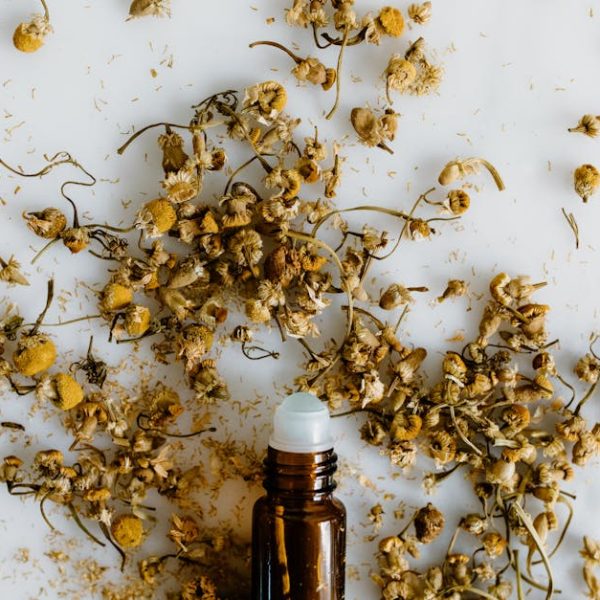Before venturing into the culinary intricacies of Coriandrum sativum, commonly referred to as coriander or cilantro, it’s crucial to point out their key differences despite coming from the same plant. Many food enthusiasts, novice chefs, and even seasoned gastronomes get a bit stumped when distinguishing between these two. As we delve into this article, we will not only differentiate these two valuable herbs but also discover their varied uses across the globe, their unique taste profiles, and even their respective medicinal implications.
Etymology and Regional Terminology Differences
The word cilantro traces its origin from the Spanish ‘Cilantro’ while coriander roots back to the Greek ‘Koriannon’. Despite coming from the same plant, cilantro generally refers to the fresh, leafy part of the plant, particularly in North America. On the other hand, coriander is most commonly used to refer to the plant’s seeds, especially in European regions. The dried seeds of the plant are typically ground into a spice, highly regarded in Indian, Middle Eastern, and North African cuisines.
Here are a few notable regional name representations to keep in mind:
- United States: Cilantro for leaves, Coriander for seeds
- United Kingdom: Coriander for both leaves and seeds
- Australia / New Zealand: Coriander for leaves, Coriander seeds for seeds
- India: Dhania for leaves, seeds referred to as whole or ground dhania
Pro Tip: Familiarizing yourself with the regional terminology differences is essential, especially when you’re traveling or trying out new international recipes. An incorrect interpretation can lead to culinary missteps!
Botanical Differences between Cilantro and Coriander
Technically, Coriandrum sativum produces both cilantro and coriander at different stages of its life cycle. Cilantro pertains to the leaves and stalks harvested during the plant’s early growth stage. Notably, cilantro leaves have a unique, vibrant green shade and an enticing aroma reminiscent of citrus zest and sage.
On the other hand, coriander refers to the dried, aromatic seeds produced when the plant fully matures. Unlike the leaves, coriander seeds exhibit a warmer, spicier fragrance likened to cinnamon, allspice, and lemon—the seeds, round in shape and brown in color, are small but packed with intense flavor.
Best Practice: To identify the life cycle stages of the plant, observe if the plant is in its leafy stage, indicating it’s cilantro, while abundance of seeds shows it’s coriander.
Up next, we’ll further differentiate coriander and cilantro based on their nutritional composition. Keep reading as we take a closer look at the health benefits they offer.
Nutritional Composition: Cilantro vs. Coriander
Both cilantro and coriander offer a variety of vitamins, minerals, and other nutrients. Cilantro being green and leafy, is a great source of vitamins A, C, and K. It’s also rich in dietary fiber which aids digestion. On the other hand, Coriander seeds contain dietary fiber, calcium, selenium and magnesium – essential minerals for bone health, amongst other nutritive compounds.
Here are some notable nutritional components:
- Cilantro: Vitamins A, C & K, dietary fiber, stomach soothing capabilities.
- Coriander Seeds: Dietary fiber, calcium, selenium, rich in antioxidants, promotes heart health.
Pro Tip: Including cilantro and coriander in your diet could provide a nutritional boost. Cilantro is great in salads while ground coriander is excellent in seasoning mixes and sauces.
Taste profile and culinary use differences
The flavors of cilantro and coriander are as different as day and night. Cilantro has a fresh, zesty, somewhat citrusy flavor with an undertone of sage. On the other hand, coriander releases a much warmer, nutty flavor with hints of citrus, cinnamon, and allspice, especially when toasted.
Here are some common dishes where you’d find them:
- Cilantro: Frequently used in Mexican cuisine (think guacamole and salsas), Asian stir-fry and noodles, Middle-Eastern falafel.
- Coriander Seeds: Highlight in Indian curries and garam masala, Moroccan spice mixtures, pickling blends.
Best Practice: Play around with the flavors. The zesty freshness of cilantro is great in raw applications, like salads and salsas, while the warm flavor of coriander works exceptionally well when roasted and added to sauces or spice mixes.
Medicinal Uses of Coriander and Cilantro
Both coriander and cilantro have been used in traditional medicine for centuries. The high antioxidant content in the seeds is linked with lower inflammation and prevention of chronic diseases. Cilantro, with its stomach-soothing capabilities, has been used in treat digestive issues.
Some traditional remedies involve:
- Coriander: used in Ayurvedic medicine for its anti-inflammatory and anti-bacterial capabilities.
- Cilantro: traditionally used to soothe upset stomachs and as a digestive aid.
Pro Tip: Remember, while cilantro and coriander both have potential health benefits, they should not replace medical treatment. Always consult with a healthcare professional before using herbs for medicinal purposes.
Understanding the distinction between cilantro and coriander is essential for both home cooks and professional chefs. This understanding extends not just to their names but their taste, nutritional benefits, and culinary uses. Armed with this knowledge, you can use each part of this extraordinary herb to its full potential, unlocking exciting flavors in your dishes and reaping numerous health benefits.
Key Takeaway:
- Cilantro and Coriander both refer to different parts of the same plant, Coriandrum sativum. Cilantro refers to the fresh leaves and stalks, while coriander refers to the dried seeds.
- Regional names differ, with North America usually referring to the fresh leaves as cilantro and the seeds as coriander, while in the UK, both the leaves and seeds are referred to as coriander.
- The two parts not only differ in appearance – with the leafy cilantro being vibrant green and the seeds (coriander) a brown color – they also differ greatly in flavor. Cilantro gives a fresh, zesty, sage-like flavor, while coriander seeds release a warm, nutty flavor with citrus and spice undertones.
- Both cilantro and coriander have health benefits. Cilantro has vitamins A, C & K and aids digestion, and coriander seeds contain dietary fiber, calcium, selenium and antioxidants which are heart-healthy.
Understanding the key differences between cilantro and coriander is not just for naming purposes, but it is crucial to utilizing both ingredients effectively in various cuisines. From now on, you can enjoy the distinct flavors and health benefits these herbs offer, transforming dishes and enhancing taste profiles.
FAQs
Q: Can cilantro and coriander be used interchangeably in recipes?
A: No, due to their distinct flavors, cilantro and coriander serve different purposes in the culinary world. Cilantro is best preserved in fresh and raw applications, such as salsas and salads, while coriander seeds are used more in spice mixes and sauces.
Q: Does Coriandrum sativum have any medicinal uses?
A: Yes, both cilantro and coriander have been used in traditional medicine. Cilantro is known to soothe stomachs and aid digestion, while coriander seeds are used in Ayurvedic medicine for their anti-inflammatory and antibacterial benefits.
Q: Can I substitute dried cilantro for coriander seeds in a recipe?
A: Not recommended. Dried cilantro and coriander seeds have different tastes. While dried cilantro still retains a hint of its fresh leafy zest, coriander seeds have a unique warm and spicy flavor profile.
Q: How do I differentiate between cilantro and coriander in a grocery store?
A: Cilantro is sold as fresh leaves in the produce section, usually tied in a bunch like parsley, while coriander seeds can be found in the spice aisle, sold as whole seeds or ground into a spice.
Q: Are there people who find cilantro tastes like soap?
A: Yes, it’s actually quite common. Some people have a specific gene that makes cilantro taste like soap to them. It’s interestingly a genetic trait.
We hope you found this article informative and helpful. Feel free to share it with anyone who might benefit from it. You can explore more such illuminating posts on our website.






